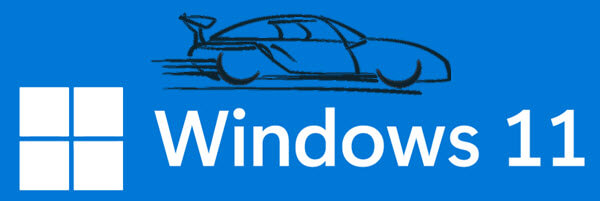First off, I want to make it clear that, at this stage anyway, nobody will be forced to upgrade to Windows 11, it will be offered as an optional upgrade. Whether or not that will change in the future, particularly nearing Windows 10’s end-of-support date, remains to be seen.
Try Out Windows 11 For 10 Days
Apparently, the “try for 10 days” option was explained in a PDF document issued to manufacturers:
Can I go back to Windows 10 after I upgrade if I don’t like Windows 11?
Yes. After you have installed the Windows 11 upgrade there is a 10 day period where you can move back to Windows 10 while keeping files and data that you brought along with you. After the 10 days you will need to back up your data and do a “clean install” to move back to Windows 10 ~ source
If your computer supports Windows 11, and you want to take it for a test run, you can do so for up to 10 days before making a final decision. If it turns out that you don’t like Windows 11 and would prefer to go back to Windows 10, rolling back is quite simple; just go to Settings > Update & Security > Recovery and choose “Go back to the previous version of Windows”. If you do that within 10 days of installing Windows 11, you can go back to Windows 10 without losing your files and installed programs.
If you somehow inadvertently install Windows 11, the same deal applies — you will have up to 10 days to go back to Windows 10 without losing anything. So, if you do inadvertently start the upgrade process, do not panic and try to stop the upgrade. If you turn off the PC or interrupt the upgrade process in some way it can potentially cause issues that might not be easily rectified. Allow the upgrade to complete and then use the rollback option to go back to Windows 10.
—


Having had a Boomer’s lived experience of dealing with Microsoft since Windows 3.1 days I can only strongly advise that you should never, ever, ever rely on Microsoft’s promises about their software being able to do anything when you need or want it to especially rolling back or restoring their own software.
You should not “test drive” Windows 11 unless you know how to, and have made, a full Windows 10 disk image using a reputable drive imaging program and you already know how to use that imaging software well enough to be able to safely restore that image. The number of times I have been saved from disaster from inexplicable Windows problems by having backup images over all these years is a heck of a lot more than the total number of fingers and toes I have to count on. System Restore has never worked for me and been able to restore my system as it is supposed to and always resulted in it stopping with an finality error message that just tells me it can’t restore your computer – and that is over a multitude of PC’s and iterations of Windows. I don’t even bother with System Restore anymore and switch off.
My advice to the unwary (and/or the types who believe everything they are told by Government and Big Tech) is do not rely on Windows 11 alone to safely rollback to Windows 10. Make an image and get in the habit of doing so regularly. There is free software out there that does the job well.
Reg has warned you !
Thank you Reg. I vaguely remember something similar with the upgrade to 10. I have not had to restore from an image, but I share your skepticism about rolling back from a trial.